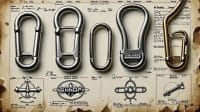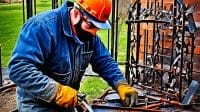When it comes to selecting pipes for industrial applications, the type of material used is of utmost importance. ASTM A312 stainless steel pipes are some of the most popular pipes used in various industries, owing to their durability, strength, and corrosion resistance.
In this expert guide, we will take an in-depth look at ASTM A312 stainless steel pipes, providing valuable tips for selecting, installing, and maintaining these pipes. We will also explore their wide range of applications in different industries.
Key Takeaways
- ASTM A312 stainless steel pipes offer high strength, durability, and corrosion resistance for a wide range of industrial applications.
- Choosing the right ASTM A312 stainless steel pipe requires careful consideration of factors such as size, schedule, and material grade.
- Proper installation, maintenance, and care are crucial for ensuring the longevity and performance of ASTM A312 stainless steel pipes.
- Ridgid pipe threader dies are an excellent tool for threading stainless steel pipes with precision.
- Despite their many benefits, ASTM A312 stainless steel pipes can still face challenges such as leaks, corrosion, and damage.
What is ASTM A312 Stainless Steel Pipe?
ASTM A312 stainless steel pipe is a type of seamless and welded pipe that is made from austenitic stainless steel. This type of pipe is widely used in various industries due to its excellent strength, durability, and corrosion resistance properties.
The composition of ASTM A312 stainless steel pipe typically includes elements such as nickel, chromium, and molybdenum, which gives the pipe its unique properties. The nickel content enhances the corrosion resistance of the pipe, while the chromium content improves its heat resistance.
ASTM A312 stainless steel pipe is also known for its high tensile strength, making it a suitable choice for applications that require pipes that can withstand high pressure, heavy loads, and extreme temperatures. The smooth finish of the pipe allows for easy flow of fluids and gases.
Characteristics of ASTM A312 Stainless Steel Pipe
Some of the key characteristics of ASTM A312 stainless steel pipe include:
- Corrosion resistance
- High strength
- High-temperature resistance
- Smooth surface finish
- Easy to clean
- Low maintenance
These characteristics make ASTM A312 stainless steel pipe a popular choice for various applications in industries such as oil and gas, chemical processing, food processing, and water treatment.
Top Tips for Selecting ASTM A312 Stainless Steel Pipe
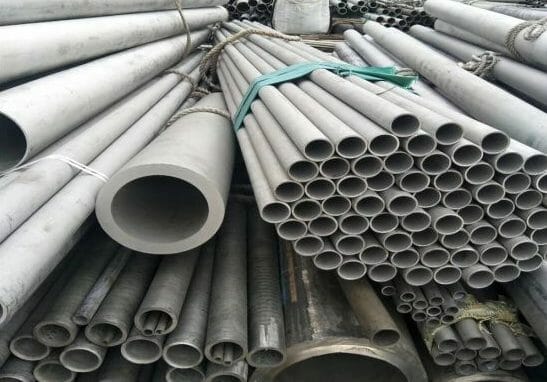
When choosing an ASTM A312 stainless steel pipe, there are several factors to consider to ensure optimal performance and longevity. Here are some top tips to keep in mind:
- Size: Select the appropriate size of the pipe based on the intended application and fluid flow requirements. A larger size may offer better flow rates, but it may also increase costs and installation complexity.
- Schedule: Consider the thickness and pressure rating of the pipe, which can vary depending on the schedule. It’s important to choose the right schedule to avoid leaks or ruptures under high-pressure conditions.
- Material grade: ASTM A312 stainless steel pipes come in different grades, such as 304 or 316. Each grade has unique properties that make it suitable for different applications. For instance, Grade 316 offers higher resistance to corrosion and is commonly used in harsh environments.
- End connections: Choose the appropriate end connections, such as flanged, threaded, or welded, based on the specific application and installation requirements.
- Operating conditions: Consider the temperature, pressure, and chemical properties of the fluid that will pass through the pipe. This will help determine the most suitable material grade and schedule for the pipe.
- Environmental factors: Take into account external factors that may affect the performance of the pipe, such as humidity, exposure to sunlight, and the presence of corrosive substances.
Additional Considerations
It’s also essential to comply with relevant industry standards and regulations when selecting and installing ASTM A312 stainless steel pipes. Be sure to consult with industry experts and follow manufacturer recommendations for best practices.
Installation Guidelines for ASTM A312 Stainless Steel Pipes
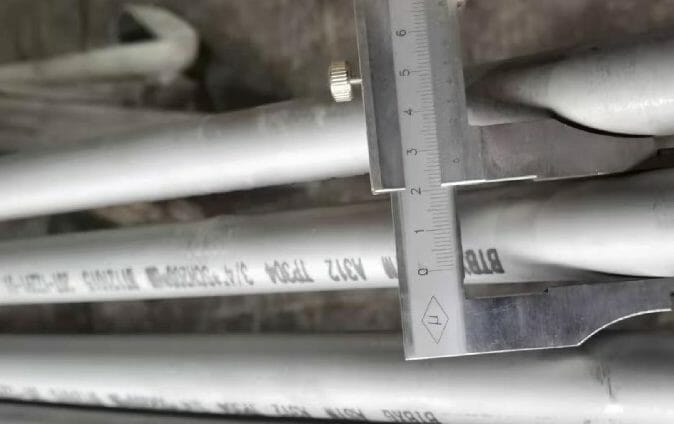
Proper installation of ASTM A312 stainless steel pipes is crucial to ensuring optimal performance and preventing damage or leaks. Here are some essential guidelines to follow:
Joining Methods
ASTM A312 stainless steel pipes can be joined using various methods, including welding, threading, and flanging. Welding is the most common method and can be done using TIG, MIG, or stick welding techniques. Threading is another option, but it can weaken the pipe and reduce its overall strength. Flanging is used for connecting pipes to valves or other equipment and involves the use of a flange and gasket.
Anchoring and Support
Proper anchoring and support are crucial for preventing excessive movement or stress on the pipes, which can lead to damage or leaks. Pipes should be anchored securely to walls, ceilings, or other structures using appropriate brackets or clamps. Support should be provided at regular intervals to prevent sagging or bending of the pipes.
| Size of Pipe | Support Interval (feet) |
|---|---|
| Up to 1 inch | 6 |
| 1-2 inches | 8 |
| 2-4 inches | 10 |
| 4-8 inches | 12 |
| Above 8 inches | 15 |
Pressure Testing
Before commissioning a new ASTM A312 stainless steel pipe system, it is essential to perform a pressure test to ensure that the pipes are free of leaks and can withstand the intended pressure. The test should be conducted in accordance with relevant industry standards and guidelines.
Note: Consult with a licensed and experienced plumber or contractor for proper installation guidelines and techniques.
Maintenance and Care for ASTM A312 Stainless Steel Pipes
Proper maintenance and care are crucial to ensuring the longevity and performance of ASTM A312 stainless steel pipes. Here are some essential tips to help you maintain and care for your pipes.

Regular Cleaning
Regular cleaning is important to prevent the buildup of dirt, grime, and other contaminants that can lead to corrosion and damage. Use a mild detergent and warm water to clean your pipes, and dry them thoroughly afterward to prevent water spots.
Avoid Harsh Chemicals
Avoid using harsh chemicals or abrasive materials on your pipes, as these can cause scratches and other damage. Instead, opt for gentle, non-abrasive cleaning solutions that are specifically designed for stainless steel.
Preventive Measures
Implementing preventive measures can help you avoid potential issues with your pipes. For example, make sure to avoid exposing your pipes to extreme temperatures or high levels of moisture. Additionally, consider installing a corrosion-resistant coating on your pipes to protect them from the elements.
Regular Inspections
Regular inspections are also important to ensure the integrity of your pipes. Look for signs of corrosion, leaks, or other damage, and address any issues as soon as possible to prevent further damage.
By following these tips and taking a proactive approach to maintenance and care, you can ensure the longevity and performance of your ASTM A312 stainless steel pipes.
Applications and Industries that Utilize ASTM A312 Stainless Steel Pipe
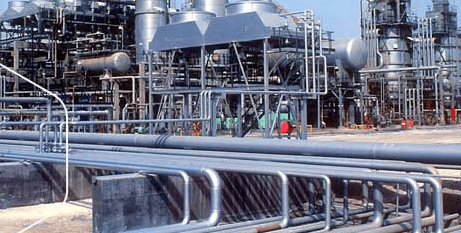
ASTM A312 stainless steel pipes are widely used in a variety of industries due to their durability, corrosion resistance, and high strength. Below are some of the common areas where ASTM A312 stainless steel pipes find their applications:
- Chemical and petrochemical industry: ASTM A312 stainless steel pipes are used in the chemical and petrochemical industry due to their resistance to corrosion and high temperatures. These pipes are used to carry toxic and hazardous materials, making their durability crucial for ensuring safety.
- Food and beverage industry: ASTM A312 stainless steel pipes are preferred in the food and beverage industry due to their corrosion resistance and hygienic properties. These pipes are easy to clean and maintain, making them ideal for carrying food and beverage products.
- Oil and gas industry: ASTM A312 stainless steel pipes are widely used in the oil and gas industry for transporting crude oil and natural gas. The pipes are resistant to corrosion caused by water and acidic substances, making them ideal for offshore and onshore applications.
- Pharmaceutical industry: ASTM A312 stainless steel pipes find their place in the pharmaceutical industry due to their non-reactive nature. These pipes are used to carry highly sensitive drugs, and their strength and durability are crucial in preventing contamination of the drugs.
- Construction industry: ASTM A312 stainless steel pipes are used in construction for plumbing and drainage systems. The pipes’ corrosion resistance and high strength make them ideal for carrying water and waste materials.
These are just some of the industries where ASTM A312 stainless steel pipes are used. The pipes’ versatile nature and durability make them a popular choice for many other applications and industries as well.
Understanding Ridgid Pipe Threader Dies for Stainless Steel
If you’re working with ASTM A312 stainless steel pipes, you know that finding the right tools and equipment is essential for a successful and efficient project. That’s where Ridgid pipe threader dies come into play.
Ridgid offers a range of pipe threader dies specifically designed for stainless steel, including their popular 47770 model. These dies are known for their high-quality construction and durability, allowing you to thread stainless steel pipes with ease.
Features and Benefits
So, what makes Ridgid pipe threader dies stand out from the competition? Here are a few key features and benefits:
| Feature | Benefit |
|---|---|
| Durable materials | Ridgid pipe threader dies are made with high-quality materials that can withstand heavy use and last for years. |
| Compatibility with ASTM A312 stainless steel pipes | These dies are specifically designed to work with stainless steel pipes, ensuring a precise and secure fit. |
| Wide range of sizes | Ridgid offers pipe threader dies in various sizes, so you can find the perfect fit for your project. |
Using Ridgid Pipe Threader Dies for Stainless Steel
When using Ridgid pipe threader dies for stainless steel, it’s important to follow proper installation and threading techniques to ensure a successful outcome. Here are a few tips:
- Make sure the pipe is properly secured and supported before threading.
- Use cutting oil to lubricate the dies and prevent overheating.
- Adjust the dies as needed for the correct size and thread type.
- Thread the pipe slowly and carefully, checking for any signs of damage or misalignment.
“Ridgid pipe threader dies are a reliable and durable choice for anyone working with ASTM A312 stainless steel pipes. With their high-quality construction and compatibility with stainless steel, these dies make threading a breeze.”
Read More : Cut Stainless Steel Pipes with Ridgid Pipe Cutter
Common Challenges and Troubleshooting for ASTM A312 Stainless Steel Pipes
Despite their many advantages, ASTM A312 stainless steel pipes can still face some challenges. Understanding these challenges and having solutions readily available can help ensure the longevity and reliability of the pipes.
Challenge #1: Leaks
Leaks are a common issue with any type of pipe system. In ASTM A312 stainless steel pipes, leaks can occur due to improper installation or damage to the pipe. The best way to prevent leaks is to ensure proper installation techniques are followed and any visible damage is repaired.
Challenge #2: Corrosion
Although ASTM A312 stainless steel pipes are highly resistant to corrosion, they are not entirely immune. Corrosion can occur due to exposure to certain chemicals or environmental factors. To prevent corrosion, it’s important to choose the right grade of stainless steel for the application and to regularly inspect the pipes for any signs of damage.
Challenge #3: Damage
Due to their strength and durability, ASTM A312 stainless steel pipes are less likely to be damaged than other types of pipes. However, they can still sustain damage from impacts or improper installation. To prevent damage, it’s important to handle the pipes carefully during installation and to ensure they are properly anchored and supported.
Troubleshooting Solutions
If any of the above challenges are encountered, there are several troubleshooting solutions available. For leaks, the affected area can be repaired with stainless steel welding or by using a specially designed sealing compound. For corrosion, the affected area can be cleaned and treated with a corrosion-resistant coating. For damage, the affected area can be repaired with stainless steel welding or the damaged section can be replaced entirely.
By understanding the common challenges and having troubleshooting solutions readily available, users of ASTM A312 stainless steel pipes can ensure the optimal performance and longevity of their pipe systems.
Conclusion
ASTM A312 stainless steel pipes are an essential component in a variety of industries, from petrochemicals to food processing. Their durability, corrosion resistance, and flexibility make them an ideal choice for high-pressure and high-temperature applications.
In this expert guide, we covered the definition and characteristics of ASTM A312 stainless steel pipes, as well as tips for selecting, installing, maintaining, and troubleshooting them. By following the guidelines and recommendations outlined in this article, you can ensure the optimal performance and longevity of your ASTM A312 stainless steel pipes.
Remember the Importance of ASTM A312 Stainless Steel Pipes
Choosing the right stainless steel pipe for specific applications can be a daunting task, but with the right knowledge and expertise, you can make informed decisions that ultimately benefit your business. Don’t forget the importance of ASTM A312 stainless steel pipes and their impact on your daily operations.
Thank you for reading our expert guide on ASTM A312 stainless steel pipes. We hope you found it informative and helpful in your decision-making process.
What Are the Best Tips for Using Stainless Steel Flux Cored Wire 030?
When it comes to using stainless steel flux cored wire 030, a stainless steel flux cored wire guide is essential. This tool provides valuable instructions on the proper usage and technique for achieving optimal results. Following the stainless steel flux cored wire guide ensures a smooth welding process and helps prevent common issues such as porosity or poor weld bead appearance. By understanding and adhering to the provided tips and techniques, users can make the most out of their stainless steel flux cored wire 030.
Why is Understanding Stainless Steel Hollow Pipe Weight Important in ASTM A312 Stainless Steel Pipes?
Understanding stainless steel pipe weight is crucial when it comes to ASTM A312 stainless steel pipes. The weight of the hollow pipe directly impacts its strength, durability, and performance. By knowing the weight, engineers can determine the optimal size and design for various applications. This knowledge enables them to choose the right stainless steel pipe that can withstand the required pressure, temperature, and corrosive environments. Ultimately, understanding stainless steel pipe weight ensures the reliability and safety of the overall system.
FAQ
Q: What is ASTM A312 Stainless Steel Pipe?
A: ASTM A312 Stainless Steel Pipe is a type of pipe that is made from stainless steel and meets the standards set by the American Society for Testing and Materials (ASTM). It is known for its superior strength and corrosion resistance, making it suitable for various industries.
Q: What are the top tips for selecting ASTM A312 Stainless Steel Pipe?
A: When selecting ASTM A312 Stainless Steel Pipe, it is important to consider factors such as size, schedule, and material grade. Ensure you choose the right size and schedule to meet your specific application requirements. Additionally, select the appropriate material grade based on the environment and conditions the pipe will be exposed to.
Q: What are the installation guidelines for ASTM A312 Stainless Steel Pipes?
A: Proper installation of ASTM A312 Stainless Steel Pipes involves using appropriate joining methods, anchoring the pipe securely, and providing adequate support. Follow the manufacturer’s guidelines and consult with professionals if needed to ensure a successful installation.
Q: How should I maintain and care for ASTM A312 Stainless Steel Pipes?
A: To maintain and care for ASTM A312 Stainless Steel Pipes, regular cleaning using appropriate methods is recommended. Avoid using abrasive cleaners that can damage the surface. Implement preventive measures such as applying protective coatings or using corrosion inhibitors to prolong the pipe’s lifespan.
Q: What are the applications and industries that utilize ASTM A312 Stainless Steel Pipe?
A: ASTM A312 Stainless Steel Pipe is utilized in a wide range of applications and industries. It is commonly used in the oil and gas industry, chemical processing plants, pharmaceuticals, food and beverage production, and more. Its versatility and durability make it suitable for various demanding environments.
Q: What are Ridgid pipe threader dies for stainless steel?
A: Ridgid pipe threader dies are specifically designed for threading stainless steel pipes. They feature specialized cutting edges and coatings that offer increased durability and performance when working with ASTM A312 Stainless Steel Pipes. These dies ensure precise and reliable threading results.
Q: What are some common challenges and troubleshooting techniques for ASTM A312 Stainless Steel Pipes?
A: Common challenges related to ASTM A312 Stainless Steel Pipes include leaks, corrosion, and damage. To troubleshoot leaks, inspect the connections and ensure they are properly sealed. If corrosion occurs, consider using corrosion-resistant coatings or implementing preventive measures. In case of damage, consult with professionals for repair or replacement options.

